Wildlife
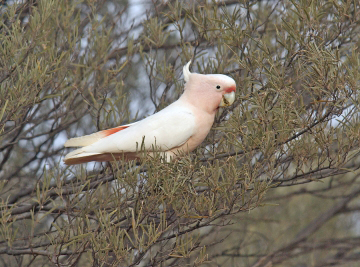
Potential to conserve wildlife
Mulga vegetation in Queensland supports many different types of native plants and animals, including at least 15 species listed as threatened or near threatened.
Notable species found in Queensland mulga include the yellow-naped snake Furina barnardi, yakka skink Egernia rugosa, kultarr Antechinomys laniger and the herb Elacholoma hornii.
Bird species considered to be characteristic of mulga in Queensland include Major Mitchell’s cockatoo, Hall’s babbler, the red-capped robin, rufous whistler, and chestnut-rumped thornbill.
The koala can also be found in mulga vegetation, especially in the northern and eastern parts of the Mulga Lands and near eucalypts such as poplar box (Eucalyptus populnea), although its range has recently contracted in this bioregion.
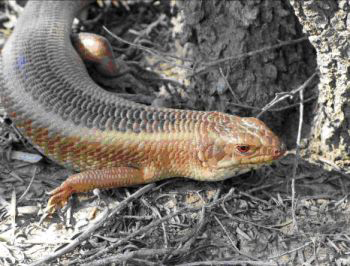
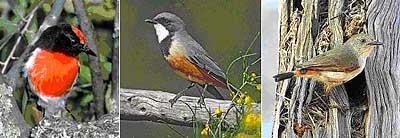
Limits to wildlife conservation
Most actions that will accumulate carbon in mulga vegetation (such as not reducing grazing, not clearing vegetation and preventing fire) also benefit wildlife by reducing threats.
Different types of shelter for wildlife, a good (and varied) supply of food, the removal or control of weeds and feral animals, and the size and shape of habitat patches and their distance from each other, will help conserve wildlife.
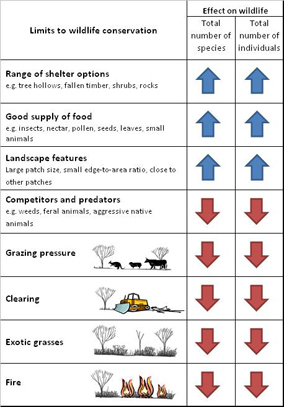
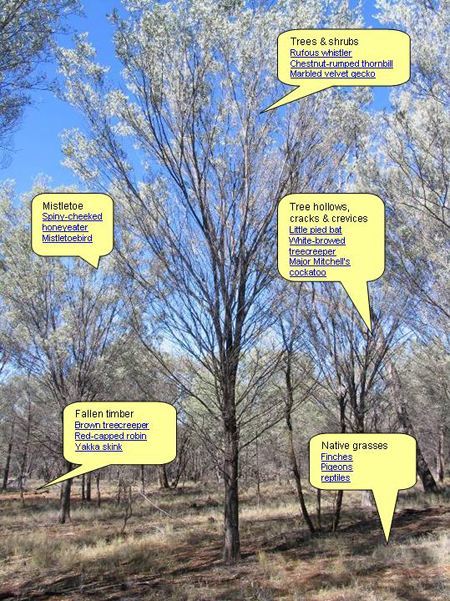
Habitat for wildlife—Shelter and food
| Feature | Benefits for wildlife | Used by |
|---|---|---|
| Trees and shrubs |
Nesting, shelter and feeding sites
A diversity of tree and shrub species that flower and fruit at different times can provide a continuous supply of food (e.g. nectar, pollen, fruit and insects) for animals A dense layer of mulga trees at 5m to 7m height benefits small birds, which tend to forage in this part of the canopy In contrast, a dense layer of low shrubs less than a metre in height (such as turkey bush) tends to have a negative impact on small birds and reptiles. Some animal species need trees and shrubs of a certain size or age (such as saplings or dead, standing trees) | Birds, invertebrates, mammals, reptiles, frogs, parasitic plants such as mistletoe |
| Tree hollows, cracks and crevices |
Shelter, nesting, a place to find food
In south-west Queensland, hollows may take over 100 years to form in eucalypts. Cracks and crevices may take up to 60 years to develop in mulga | Parrots, treecreepers, bats, reptiles |
| Fallen timber | Shelter, basking and feeding areas | Birds, reptiles, frogs, mammals, invertebrates |
| Mistletoe |
Nectar, berries and nesting sites
Can provide nectar and berries at times when these foods are scarce in the landscape | Birds, invertebrates, mammals |
| Leaf litter | Shelter and feeding areas | Birds, invertebrates, reptiles, frogs, mammals |
| Rocks | Shelter, basking and feedings areas; habitat for plants | Invertebrates, reptiles, frogs, mammals, plants |
| Perennial native grass cover | Shelter and feeding areas | Plants, small mammals, birds, reptiles, invertebrates |
| Invertebrates | Food, pollination, seed dispersal | Birds, reptiles, frogs, mammals, plants |
| Fungi | Food, beneficial relationship with plants | Mammals, invertebrates |
Landscape features
| Feature | Benefits for wildlife |
|---|---|
| Large patch size |
Support larger populations of plants and animals
Support animals that need large territories and/or occur in low population densities May also support more species of wildlife |
| Small edge-to-area ratio |
Patches that are rounded in shape suffer fewer ‘edge effects’ than patches of a similar size that are long and thin
Edge effects include increased weed invasion, predation and exposure to wind, sun and temperature variations. All of these can have important impacts on wildlife |
| Close to other patches |
Allows animals and plants to disperse between patches
Reduces the risk of predation for animals when they move between patches Improves the exchange of pollen between patches |
| How much of the landscape is cleared |
Birds and mammals are negatively affected if more than 70% of the landscape is cleared of suitable habitat
There is also an interaction between grazing and how much landscape is cleared, as cattle tend to congregate in the remaining patches of woody vegetation If most of a landscape, or vegetation type, has been cleared, any remnants become very important for wildlife conservation, even if they are small or in poor condition. These remnants may provide valuable source populations for restoring other parts of the landscape |
Habitat features used by some species that live in mulga
| Tree hollows, cracks & crevices | Fallen timber | Trees & shrubs | Native grasses | Litter | Mistletoe | Rocks | Insects | |
|---|---|---|---|---|---|---|---|---|
| Mammals | x | x | x | |||||
| Little pied bat | x | x | ||||||
| Kultarr | x | |||||||
| Koala | x | |||||||
| Birds | x | x | ||||||
| White-browed treecreeper | x | x | x | x | ||||
| Brown treecreeper | x | x | x | x | ||||
| Major Mitchell's cockatoo | x | x | ||||||
| Red-capped robin | x | x | ||||||
| Chestnut-rumped thornbill | x | x | x | |||||
| Splendid wren | x | x | ||||||
| Spiny-cheeked honeyeater | x | x | x | |||||
| Rufous whistler | x | x | ||||||
| Crested bellbird | x | |||||||
| Grey shrike-thrush | x | x | ||||||
| Mistletoe bird | x | |||||||
| Reptiles | x | x | ||||||
| Marbled velvet gecko | x | x | x | |||||
| Yakka skink | x | x | x | |||||
| Insects | x | x | x | x | x | x | x | x |
| Spiders | x | x | x | x | x | x | x | x |
| Plants | x | x |
Threats to wildlife
| Threat | Impacts on wildlife | Wildlife affected |
|---|---|---|
| Weeds and feral animals |
Competition, predation
Some management actions to control weeds and feral animals can also have negative impacts on native species Replacement of native plant species | Many different types of plants and animals |
| Exotic grasses |
Replacement of native plant species
Changes in habitat structure Increased intensity and frequency of fire | Plants, birds, reptiles, mammals |
| Yellow-throated miners | These aggressive native bird species reduce the abundance and species richness of small woodland birds | Small birds |
| Grazing pressure | Can reduce shelter and food for wildlife by slowing and preventing the recruitment and growth of mulga, grasses and other plants, and by trampling and reducing the amount of litter and fallen timber | Many different types of plants and animals |
| Clearing |
Removes many plant and animal species
Removes food and shelter for animals that depend on the plant species and structure found in mature mulga vegetation | Many different types of plants and animals |
| Fire |
Fire kills mulga and destroys features such as litter, fallen timber and hollows that are important for many animal species
Even low severity management fires can remove habitat such as large hollow-bearing trees that provide essential resources for many animals | Many different types of plants and animals |